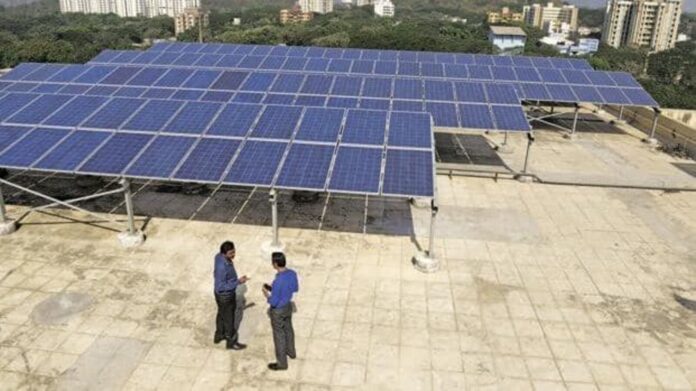However, it raises a crucial question: can the scheme ensure viability for both the beneficiaries and distribution companies (discoms)? With the current level of rooftop solar installations at about 11 GW, a challenging journey lies ahead. Also, it isn’t just important to consider the aggregate deployment rate as a marker of success, but also the issue of equity.
A key feature of the Surya Ghar Yojana is the increased capital subsidy for smaller capacities (up to 3 kW), maxing out at ₹78,000. The government’s messaging of the scheme’s ‘300 free units’ aims to address energy equity, with the dual benefits of boosting household incomes and promoting energy security. The targeting of these specific consumers is also a strategic move from the perspective of discoms. These households typically fall in the lower tariff slab and are often cross-subsidized by higher-paying commercial and industrial (C&I) consumers.
The theory and intent are clear. However, it remains to be seen whether the enhanced capital subsidy will sufficiently attract the intended beneficiaries. Major hurdles include limited rooftop space among these consumers and the fact that they already receive subsidized or even free power in some states, thereby limiting their motivation to make the capital expenditure, even with subsidies and government-supported loans.
Having built detailed models on stakeholders, incentives and costs as well as benefits, our initial findings indicate that there is a notable disparity in the payback period for different consumers, depending on their rooftop solar size and annual electricity consumption. For instance, a consumer with a 1kW peak capacity system consuming approximately 1,000kilowatt-hours (kWh) of electricity annually would need nearly 10 years to recoup the investment.
In contrast, an 8kW rooftop solar consumer—ostensibly a richer person—consuming around 6,000kWh annually would see a payback in just six years. The payback period could be even longer for systems smaller than 1kW, which are common in low-income households. This is because larger (and likely richer) consumers have higher tariff slabs, and thus derive a greater value for the generated solar power.
Who installs rooftop solar is an important variable for those on the other side, the discoms, because it has major financial implications. Because consumer tariffs are mostly progressive (lower tariff slabs for lower volume consumers), the discoms would not like their “paying customers” in higher slabs to move away or consume less electricity.
The other challenge for the discoms related to the way rooftop solar is currently metered and billed. It’s almost impossible for consumer demand to exactly match the output from the rooftop solar. If the rooftop solar under-generates compared to demand, the discom becomes the supplier. But very often, in the middle of the day, the rooftop solar will over-generate and this excess is fed into the discom’s network. How we account for this energy is important.
Most residential solar engages “net metering”, which means that the excess energy exported by consumers to the grid is offset by their non-solar time-period consumption, lowering the monthly billed volume of energy. This lowers the total consumption, and it also lowers the tariff slab of consumption for the consumer, further lowering discom revenues.
There is yet another cost upon the discom due to time-of-day differences in power costs. In the middle of the day, solar parks can provide cheaper power and so the value of the solar power from the rooftop solar is low to the discom. In contrast, when they supply power back mostly in the evening, they must procure expensive peak power. This cannot sustain.
Digging into financials even deeper, using granular data across 11 major states, our studies reveal that a considerable portion of the fixed costs for all consumer categories—residential, commercial and industrial—is recovered through energy charges. This cost recovery distortion in tariffs means that residential consumers pay disproportionally lower for fixed charges, which are only 13% of the total bill (excluding electricity duty). However, the fixed cost’s share in the average cost of supply amounts to 53% of the total cost. This cost recovery is at risk with increased rooftop solar deployment, which lowers the energy offtake but keeps the infrastructure costs the same for the discom.
In conclusion, the scalability of the Surya Ghar Yojana is contingent on several crucial factors, including proper price signalling, efficient grid management for handling local issues, and well-structured curtailment policies. Storage can help but is presently very expensive. In the long run, can capital subsidies for rooftop solar be used to offset tariff subsidies for consumers? Right now, they get both.
Neglecting such aspects could potentially result in bottlenecks hindering the initiative’s effective management and scaling. Ultimately, achieving success in the Surya Ghar Yojana requires a delicate balance between ensuring financial equity for consumers and maintaining the financial stability of discoms.
These are the authors’ personal views.
Niteesh Shanbog, Sharath Rao and Rahul Tongia are, respectively, a research analyst, fellow and senior fellow at the Centre for Social and Economic Progress (CSEP).
Unlock a world of Benefits! From insightful newsletters to real-time stock tracking, breaking news and a personalized newsfeed – it’s all here, just a click away! Login Now!
Download The Mint News App to get Daily Market Updates.
More
Less
Published: 10 May 2024, 03:30 PM IST
#Surya #Ghar #scheme #Balance #consumer #equity #discom #stability
